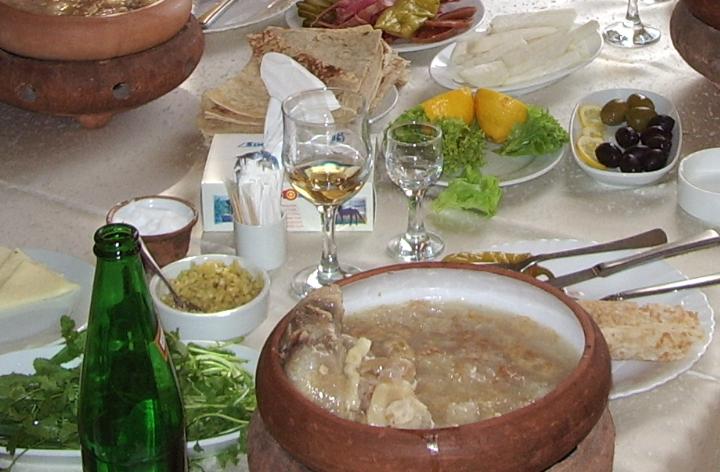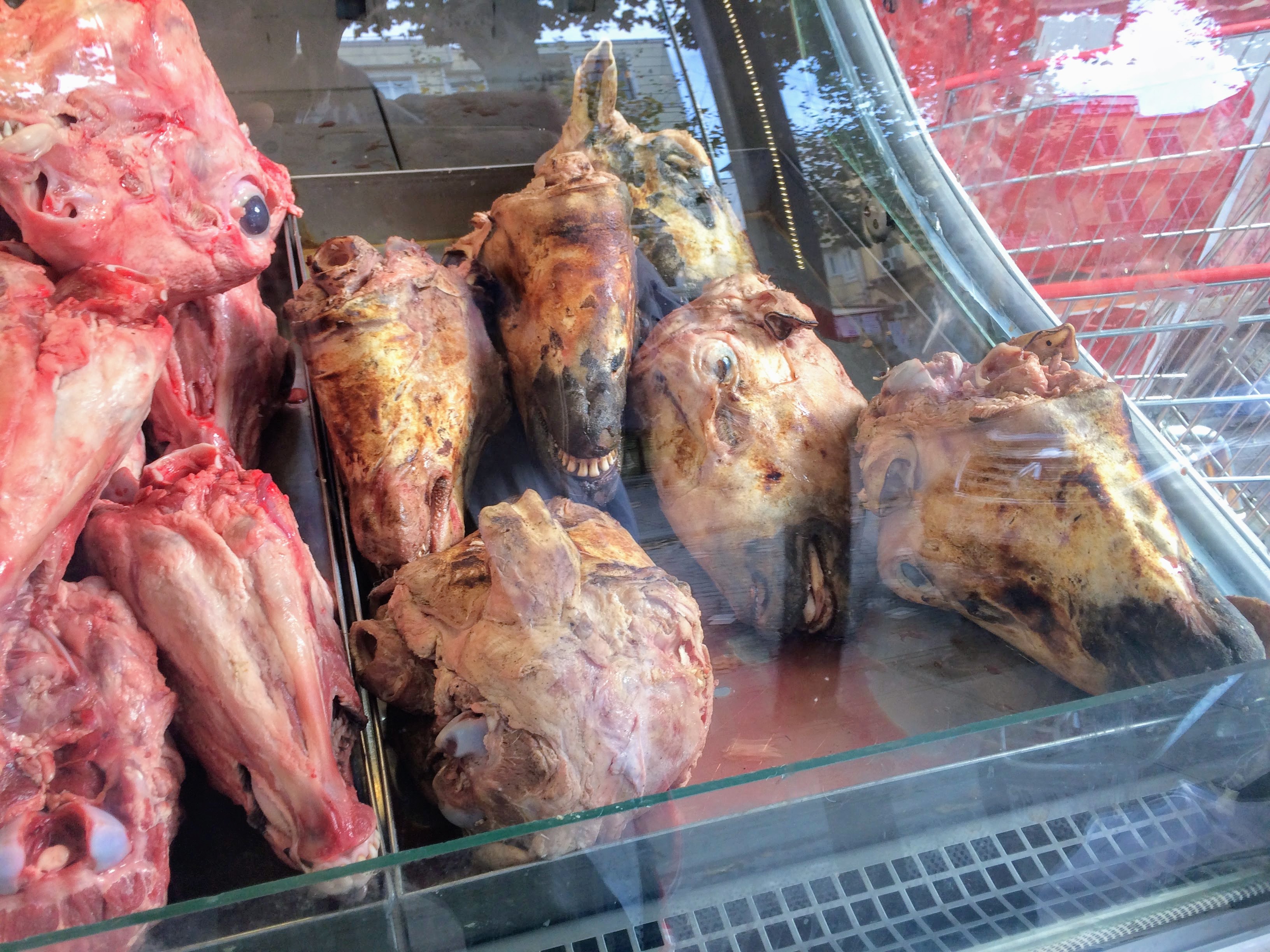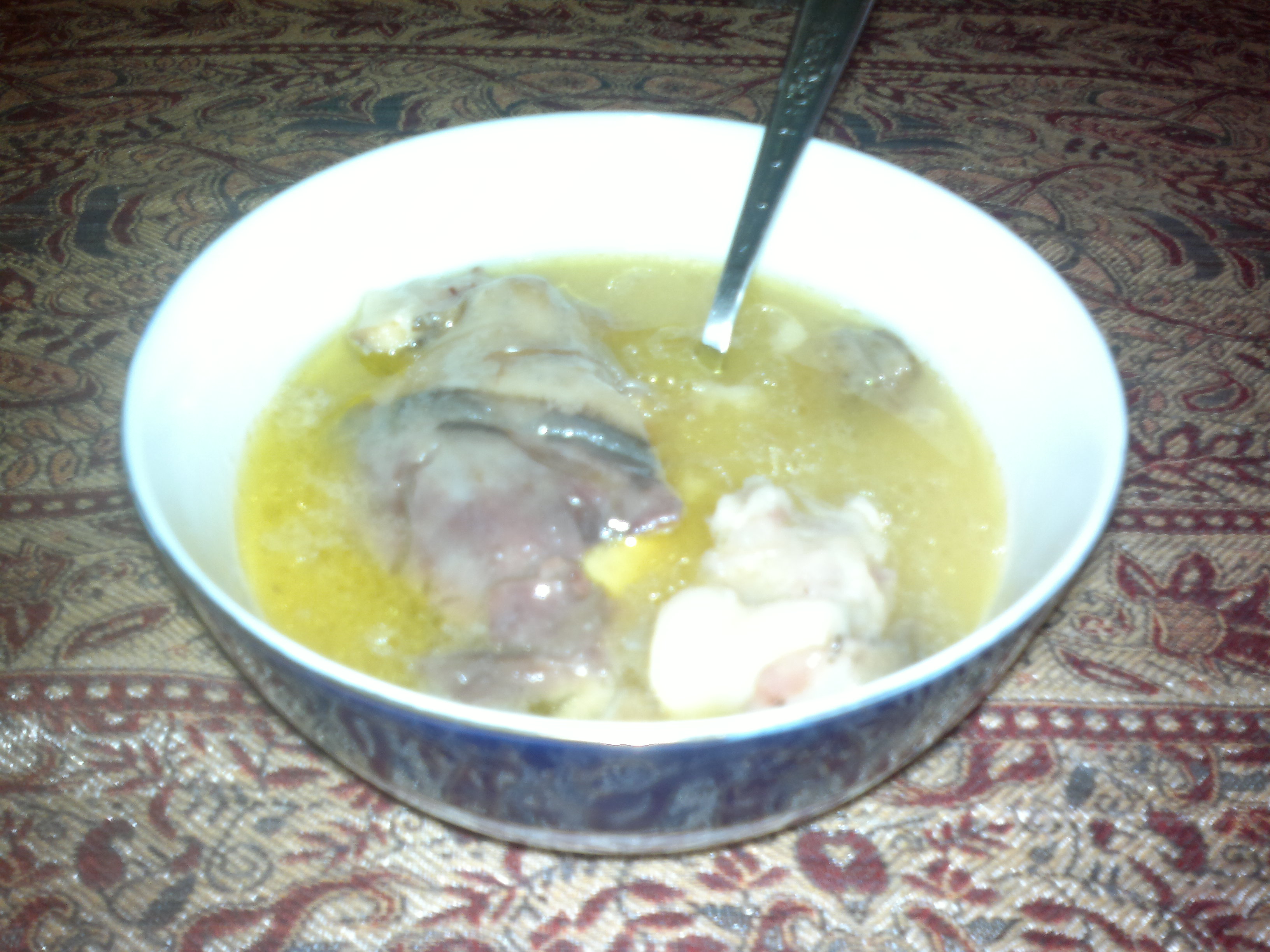Paça on:
[Wikipedia]
[Google]
[Amazon]

 Khash ( hy, խաշ; known by the derivations ''khashi'' () and , respectively) is a dish of boiled cow or sheep parts, which might include the head, feet, and stomach ( tripe).
It is also known by other designations, namely ( fa, پاچه; al, paçe; Assyrian: ; acm, پاچة, pacha; sh, pača; bg, пача; hu, pacal; gr, πατσάς), ( fa, کلهپاچه; tr, kelle paça; az, kəllə-paça), ( cv, какай шÿрпи) or ( ku, سهروپێ).
Khash and its variations are traditional dishes in Afghanistan, Albania, Armenia, Azerbaijan, Bosnia and Herzegovina, Bulgaria, Georgia, Greece, Iran, Iraq, Turkey, North Macedonia, Mongolia and some
Khash ( hy, խաշ; known by the derivations ''khashi'' () and , respectively) is a dish of boiled cow or sheep parts, which might include the head, feet, and stomach ( tripe).
It is also known by other designations, namely ( fa, پاچه; al, paçe; Assyrian: ; acm, پاچة, pacha; sh, pača; bg, пача; hu, pacal; gr, πατσάς), ( fa, کلهپاچه; tr, kelle paça; az, kəllə-paça), ( cv, какай шÿрпи) or ( ku, سهروپێ).
Khash and its variations are traditional dishes in Afghanistan, Albania, Armenia, Azerbaijan, Bosnia and Herzegovina, Bulgaria, Georgia, Greece, Iran, Iraq, Turkey, North Macedonia, Mongolia and some
 Khash is a purist meal with great parsimony in ingredients. The feet are depilated, cleaned, kept in cold water in order to get rid of bad smell, and boiled in water all night long, until the water has become a thick broth and the meat has separated from the bones. No salt or spices are added during the boiling process. The dish is served hot. One may add salt,
Khash is a purist meal with great parsimony in ingredients. The feet are depilated, cleaned, kept in cold water in order to get rid of bad smell, and boiled in water all night long, until the water has become a thick broth and the meat has separated from the bones. No salt or spices are added during the boiling process. The dish is served hot. One may add salt,
 The Greek version, called ''patsás'' (πατσάς), may be seasoned with red wine vinegar and garlic (''skordostoubi''), or thickened with avgolémono. The Greek version sometimes uses calf feet with the tripe.
Specialized tavernas serving patsa are known as ''patsatzidika''. Because patsas has the reputation of remedying hang-over and aiding digestion, ''patsatzidika'' are often working overnight, serving people returning home after dinner or clubbing.
The Greek version, called ''patsás'' (πατσάς), may be seasoned with red wine vinegar and garlic (''skordostoubi''), or thickened with avgolémono. The Greek version sometimes uses calf feet with the tripe.
Specialized tavernas serving patsa are known as ''patsatzidika''. Because patsas has the reputation of remedying hang-over and aiding digestion, ''patsatzidika'' are often working overnight, serving people returning home after dinner or clubbing.

 Khash ( hy, խաշ; known by the derivations ''khashi'' () and , respectively) is a dish of boiled cow or sheep parts, which might include the head, feet, and stomach ( tripe).
It is also known by other designations, namely ( fa, پاچه; al, paçe; Assyrian: ; acm, پاچة, pacha; sh, pača; bg, пача; hu, pacal; gr, πατσάς), ( fa, کلهپاچه; tr, kelle paça; az, kəllə-paça), ( cv, какай шÿрпи) or ( ku, سهروپێ).
Khash and its variations are traditional dishes in Afghanistan, Albania, Armenia, Azerbaijan, Bosnia and Herzegovina, Bulgaria, Georgia, Greece, Iran, Iraq, Turkey, North Macedonia, Mongolia and some
Khash ( hy, խաշ; known by the derivations ''khashi'' () and , respectively) is a dish of boiled cow or sheep parts, which might include the head, feet, and stomach ( tripe).
It is also known by other designations, namely ( fa, پاچه; al, paçe; Assyrian: ; acm, پاچة, pacha; sh, pača; bg, пача; hu, pacal; gr, πατσάς), ( fa, کلهپاچه; tr, kelle paça; az, kəllə-paça), ( cv, какай шÿрпи) or ( ku, سهروپێ).
Khash and its variations are traditional dishes in Afghanistan, Albania, Armenia, Azerbaijan, Bosnia and Herzegovina, Bulgaria, Georgia, Greece, Iran, Iraq, Turkey, North Macedonia, Mongolia and some Persian Gulf countries
The Arab states of the Persian Gulf refers to a group of Arab states which border the Persian Gulf. There are seven member states of the Arab League in the region: Bahrain, Kuwait, Iraq, Oman, Qatar, Saudi Arabia, and the United Arab Emirates. ...
.
Etymology
The name ''khash'' originates from the Armenian verb (), which means "to boil". The dish, initially called ''khashoy'' (), is mentioned by a number of medieval Armenian authors, including Grigor Magistros (11th century),Mkhitar Heratsi
Mkhitar Heratsi ( hy, Մխիթար Հերացի) was a 12th-century Armenian physician. He was born in Khoy (present-day northwestern Iran). He was well versed in the Persian, Greek, and Arabic languages.Agop Jack Hacikyan, Gabriel Basmajian, Edwa ...
(12th century), and Yesayi Nchetsi (13th century).
The Persian designation ''pacha'' stems from the term , literally meaning "trotter". The combination of a sheep's head and trotters is called , which literally means "head ndtrotter" in Persian.
In the South Caucasus
 Khash is a purist meal with great parsimony in ingredients. The feet are depilated, cleaned, kept in cold water in order to get rid of bad smell, and boiled in water all night long, until the water has become a thick broth and the meat has separated from the bones. No salt or spices are added during the boiling process. The dish is served hot. One may add salt,
Khash is a purist meal with great parsimony in ingredients. The feet are depilated, cleaned, kept in cold water in order to get rid of bad smell, and boiled in water all night long, until the water has become a thick broth and the meat has separated from the bones. No salt or spices are added during the boiling process. The dish is served hot. One may add salt, garlic
Garlic (''Allium sativum'') is a species of bulbous flowering plant in the genus ''Allium''. Its close relatives include the onion, shallot, leek, chive, Allium fistulosum, Welsh onion and Allium chinense, Chinese onion. It is native to South A ...
, lemon juice, or vinegar according to one's taste. Dried lavash is often crumbled into the broth to add substance. Khash is generally served with a variety of other foods, such as hot green and yellow peppers, pickles, radishes, cheese
Cheese is a dairy product produced in wide ranges of flavors, textures, and forms by coagulation of the milk protein casein. It comprises proteins and fat from milk, usually the milk of cows, buffalo, goats, or sheep. During production, ...
, and fresh greens
Greens may refer to:
*Leaf vegetables such as collard greens, mustard greens, spring greens, winter greens, spinach, etc.
Politics Supranational
* Green politics
* Green party, political parties adhering to Green politics
* Global Greens
* Europ ...
such as cress. The meal is almost always accompanied by vodka (preferably mulberry
''Morus'', a genus of flowering plants in the family Moraceae, consists of diverse species of deciduous trees commonly known as mulberries, growing wild and under cultivation in many temperate world regions. Generally, the genus has 64 identif ...
vodka) and mineral water.
In Georgia, Khashi is served together with garlic, milk, salt and chacha. Usually they eat this dish early morning, or during hangovers.
In the medieval Armenian medical textbook ''Relief of Fevers {{italic title
''Relief of Fevers'' ( hy, Ջերմանց Մխիթարություն, ''Jermants Mkhitarutiun'') is an encyclopedic study written by medieval Armenians, Armenian physician Mkhitar Heratsi in 1184, which has survived in full. The autho ...
'' (1184), khash was described as a dish with healing properties, e.g., against snuffle. It was recommended to eat it while drinking wine. In case of ailment, khash from the legs of a yeanling (lamb or kid) was advised.
Formerly a nutritious winter food, it is now considered a delicacy, and is enjoyed as a festive winter meal. Modern-day convention in Armenia dictates that it should be consumed during the month that has an ''r'' in its name, thus excluding May, June, July, and August ('' month names in Armenian are derivatives of the Latin names''). Khash is traditionally consumed during cold months in Azerbaijan and Georgia.
In the South Caucasus, khash is often seen as food to be consumed in the mornings after a party, as it is known to battle hangovers (especially by men) and eaten with a " hair of the dog" vodka chaser.
There is much ritual involved in khash parties. Many participants abstain from eating the previous evening, and insist upon using only their hands to consume the unusual (and often unwieldy) meal. Because of the potency and strong smell of the meal, and because it is eaten early in the mornings and so often enjoyed in conjunction with alcohol, khash is usually served on the weekend or on holiday
A holiday is a day set aside by custom or by law on which normal activities, especially business or work including school, are suspended or reduced. Generally, holidays are intended to allow individuals to celebrate or commemorate an event or tra ...
s.
In Iran
Kalle-pache (; ; literally meaning "head ndtrotter") consists of a sheep's head ( including the brain) and trotters, and is typically seasoned with lemon andcinnamon
Cinnamon is a spice obtained from the inner bark of several tree species from the genus ''Cinnamomum''. Cinnamon is used mainly as an aromatic condiment and flavouring additive in a wide variety of cuisines, sweet and savoury dishes, breakfa ...
. Usually consumed as a breakfast soup, kalle-pache is traditional to Afghanistan and Iran.
In Iran, kalle-pache is usually cooked in specialty stores, and is served in the morning. It is especially consumed during cold seasons. To prepare kalle-pache, the sheep's head and trotters are collected, cooked, and treated as per the recipe.
In Israel
During winter, it is very common to eat sheep or cow parts in soup with onions, spices and squeezed lemon and is prepared in many ways such as maraq regel (leg soup), maraq moh (brain soup), maraq me'ayim (intestine soup), maraq beten (tripe soup) and maraq rosh (head soup). It is usually accompanied with flat bread, lemon, hot chilli pepper and an alcoholic drink, usually arak.In Iraq
Pacha is a traditional Iraqi dish made from sheep's head, trotters, and stomach; all boiled slowly and served with bread sunken in the broth. The cheeks and tongues are considered the best parts. Many people prefer not to eat the eyeballs, which could be removed before cooking. The stomach lining would be filled with rice and lamb and stitched with a sewing thread ( ar, كيبايات). Sheep brain is also included.In Arab countries
The dish is known in Kuwait, Bahrain, and other Persian Gulf countries as ''Pacheh'' (), since the Arabic alphabet has no letters 'p' and 'ch' so the dish is written with 'b' and 'j' as in ''Bajeh'' ). A variation of that is found in other Arab countries such as in Egypt and is known as ''kawari (), Egyptians eat cow brain and sheep brain.In Albania
Albania's popular pache () consists of a sheep's or any cattle's head, that is boiled until meat comes off easily. It is then stewed with garlic, onion, black pepper, and vinegar. Sometimes a little flour is added to thicken the stew. It is also frequently cooked with cattle feet or tripe. It makes a hot and hearty winter stew.In Turkey
In Turkish culinary culture, ''pacha'' () is a generic word for certain soup preparations, especially with offal, but also without it. In most parts of Turkey, such as in Kastamonu, for instance, the term ("feet pacha") is used for cow, sheep, or goat hooves, and the term is used for "head pacha" ( chorba). Sometimes the term is also used for tongue soup, while "meat pacha" is made with (scrag end
Scrag end is a cut of lamb and mutton taken from the neck and common in the United Kingdom and the Commonwealth. It is a primal cut separated from the carcass during butchering.
Value
Scrag end is one of the cheaper cuts of meat, and is often use ...
of sheep's neck). In Turkey, the word refers to a sheep's head roasted in the oven, which is served after grilling at specialized offal restaurants.
In Greece
 The Greek version, called ''patsás'' (πατσάς), may be seasoned with red wine vinegar and garlic (''skordostoubi''), or thickened with avgolémono. The Greek version sometimes uses calf feet with the tripe.
Specialized tavernas serving patsa are known as ''patsatzidika''. Because patsas has the reputation of remedying hang-over and aiding digestion, ''patsatzidika'' are often working overnight, serving people returning home after dinner or clubbing.
The Greek version, called ''patsás'' (πατσάς), may be seasoned with red wine vinegar and garlic (''skordostoubi''), or thickened with avgolémono. The Greek version sometimes uses calf feet with the tripe.
Specialized tavernas serving patsa are known as ''patsatzidika''. Because patsas has the reputation of remedying hang-over and aiding digestion, ''patsatzidika'' are often working overnight, serving people returning home after dinner or clubbing.
Similar dishes
* Paya, South Asian version of this dish *Smalahove
''Smalahove'' (also called ''smalehovud'', ''sau(d)ehau(d)'' or ''skjelte'') is a Western Norwegian traditional dish made from a sheep's head, originally eaten before Christmas. The name of the dish comes from the combination of the Norwegian wor ...
, boiled sheep's head, a traditional western Norwegian food
* Soğuk paça, a Turkish cold dish made with the jelly obtained from sheep or cow hooves
* Svið
Svið (; transliterated as svid or svith) is a traditional Icelandic dish consisting of a sheep's head cut in half, singed to remove the fur, and boiled with the brain removed, sometimes cured in lactic acid.
Svið originally arose at a time w ...
, an Icelandic dish that includes a sheep's head cut in half
See also
* Aspic * Beshbarmak *Chitterlings
Chitterlings (), sometimes spelled chitlins or chittlins, are the small intestines of domestic animals. They are usually made from pigs' intestines. They may also be filled with a forcemeat to make sausage.''Oxford English Dictionary'', 1st editi ...
* Haggis
* Head cheese
* Powsowdie Powsowdie is a Scottish sheep's-head broth or soup. Traditional preparation of the soup includes sheep's trotters as an ingredient. Dried peas and barley can also be used as additional ingredients. Powsowdie has been described as a speciality dish ...
* Tripe chorba
Tripe soup, tripe stew or tripe chorba ( tr, işkembe çorbası, bg, шкембе чорба, škembe čorba, mk, чкембе чорба) is a soup or stew made with tripe (cow or lamb/mutton stomach). It is widely (not universally) considere ...
References
External links
* * * * {{DEFAULTSORT:Khash (dish) Albanian cuisine Armenian cuisine Armenian words and phrases Assyrian cuisine Azerbaijani cuisine Bahraini cuisine Beef dishes Bosnia and Herzegovina cuisine Bulgarian cuisine Cuisine of Georgia (country) Greek cuisine Iranian cuisine Iraqi cuisine Kuwaiti cuisine Middle Eastern cuisine National dishes Offal Soviet cuisine Turkish cuisine